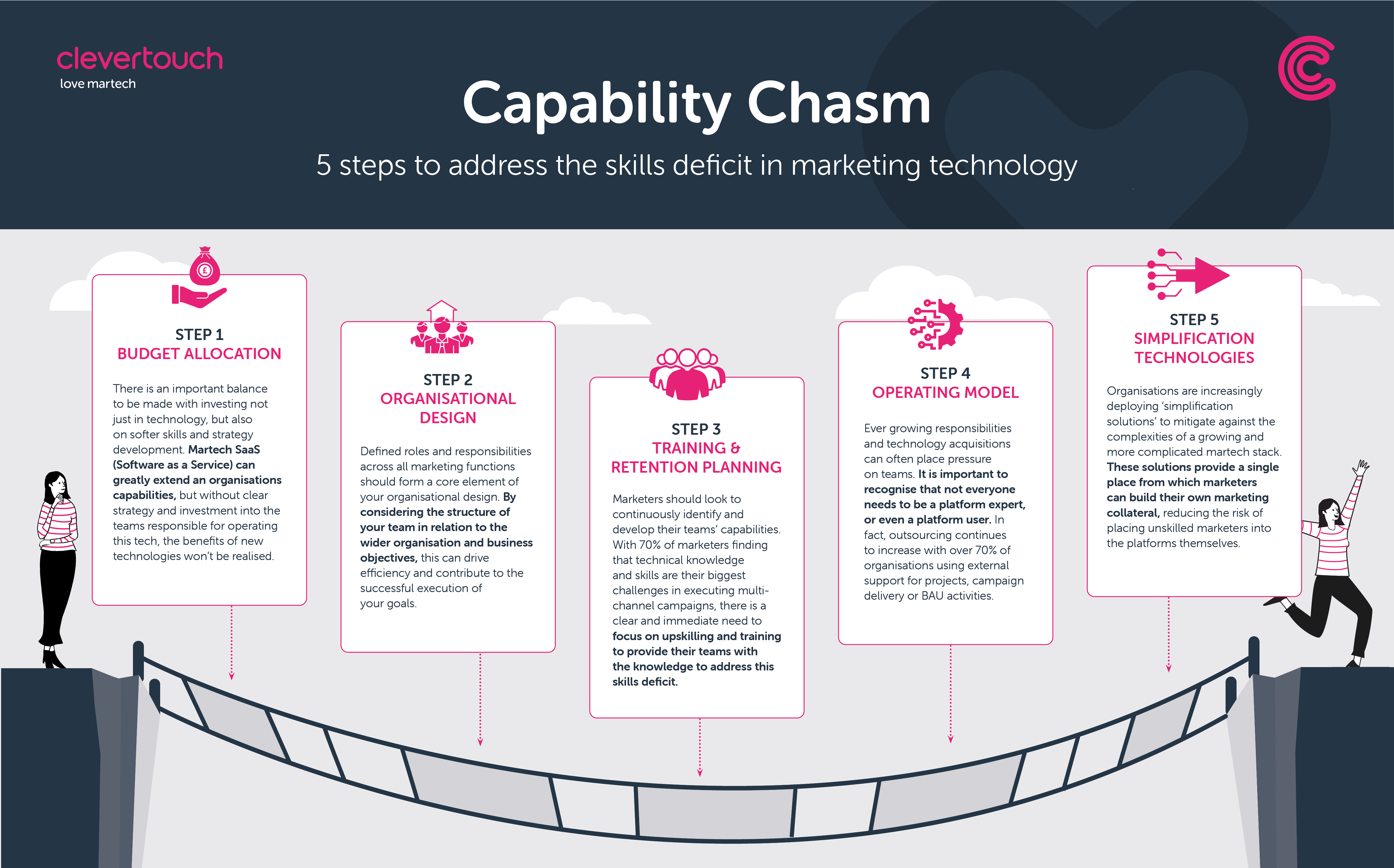Capability Chasm is a term which defines the gap between the ambition and ability of marketing departments with their skills, strategy, and organisational design approach to marketing technology.
Check out our infographic on the 5 steps to address the skills deficit in marketing technology here for more information.
There is an important balance to be made with investing not just in technology, but also on softer skills and strategy development. Investing in martech SaaS can extend an organisations capabilities far beyond where they currently are. However, without investment in developing a clear strategy and into the teams responsible for managing and operating these platforms, this can completely negate the benefits of a new technology.
The State of Martech 2022 found that 90% of Marketers have a priority focus on their technology, while only 10% of Marketers are focused on talent management and organisational development. Lack of investment into people can often be a significant oversight because it is this talent who will be tasked with managing the new technologies, so this importance should be reflected in investment decisions.
Spending more on martech than on Martech resource is a common theme in many annual reports, and yet the number of marketers who state they are overwhelmed by their technology is not decreasing. Marketers need to look at identifying key talent before continuing their purchase of further martech if they are to overcome this skill deficit.
There are 4 key questions to answer when it comes to budget allocation between people vs technology:
- Is there a harmony between People and Technology?
A common issue with new technology acquisitions is that they have not been considered alongside the existing technologies and processes. Clevertouch champion the idea of the Martech Spine©, that is, focussing on a core set of 4-6 technologies, ensuring they are integrated, with the information management and flow mapped to support the organisation, not the other way round. You can read more about the Martech Spine© here.
When it comes to new technologies, they should demonstrate a clear and logical improvement to existing processes. As is often the case, organisations will look at the technology as standalone without considering the business impact, something which can later cause disruption and process overhauls.
If people are bought in on the improvements and benefits of a new technology, adoption will be far smoother. - Who owns the technology?
It will be the people within your teams that will be managing and operating the new technologies on a daily basis. It is therefore important not just to consider the technology investment, but also the investment required in people, training and organisational design to be able to reap those technology benefits. - What are the future challenges?
By placing too much of a focus on technology investment and neglecting people investment, marketing leaders can only increase the ‘Capability Chasm’ / skill deficit in the Martech industry. The result of this can mean existing employees may be over-worked in order to try to bridge that gap. It’s important to consider investment in new highly skilled people but also focussing on retention strategies for existing talented employees. - Is there a disjointed customer experience, and if so, why?
We’ve discussed the idea of creating harmony between people and technology investment, however it is also vital to consider the impact on the customer with investments into technology. Organisations can often become blindsided and create disjointed customer journeys with a goal of making use of all the technology available to them rather than a goal of customer satisfaction. What they should however be doing, is focusing on the technologies that create the best user experience.
Investment in technology alone will not create a well thought out customer journey - instead think about the challenges your customers are facing, and then address these issues. People are required for this, and these people need the investment and experience to make such improvements.
Check out our infographic on the 5 steps to address the skills deficit in marketing technology here for more information.
Want to know more about organisational design? Book a consultancy session today here.


